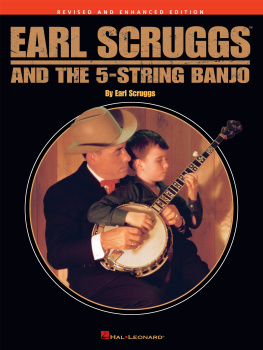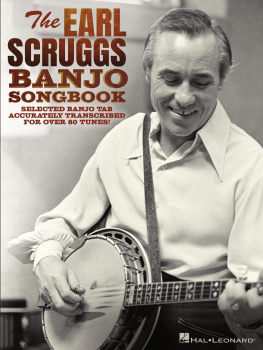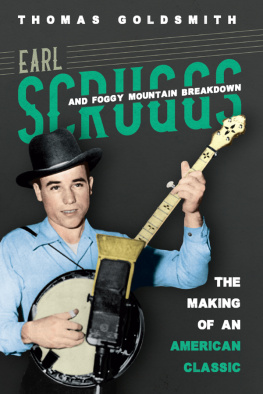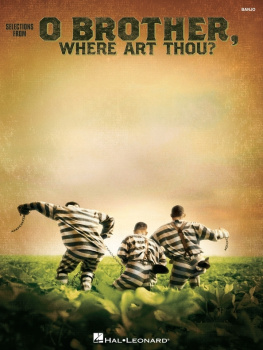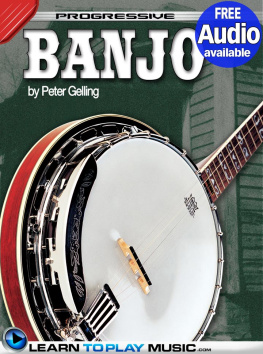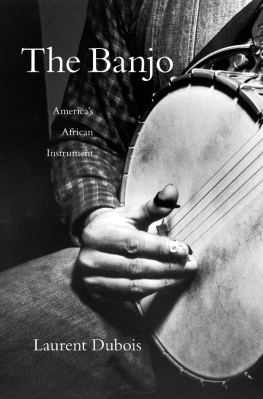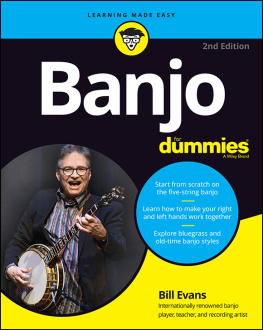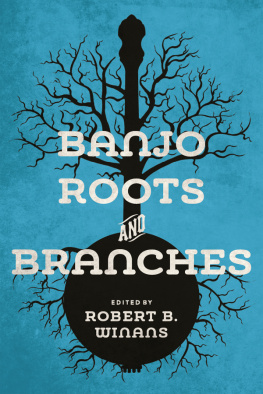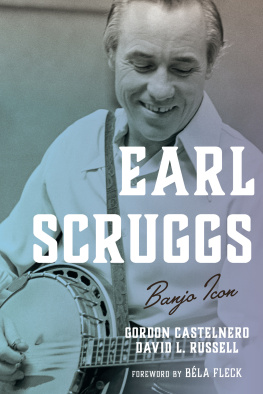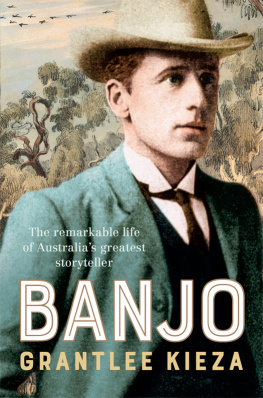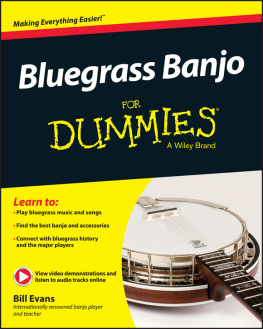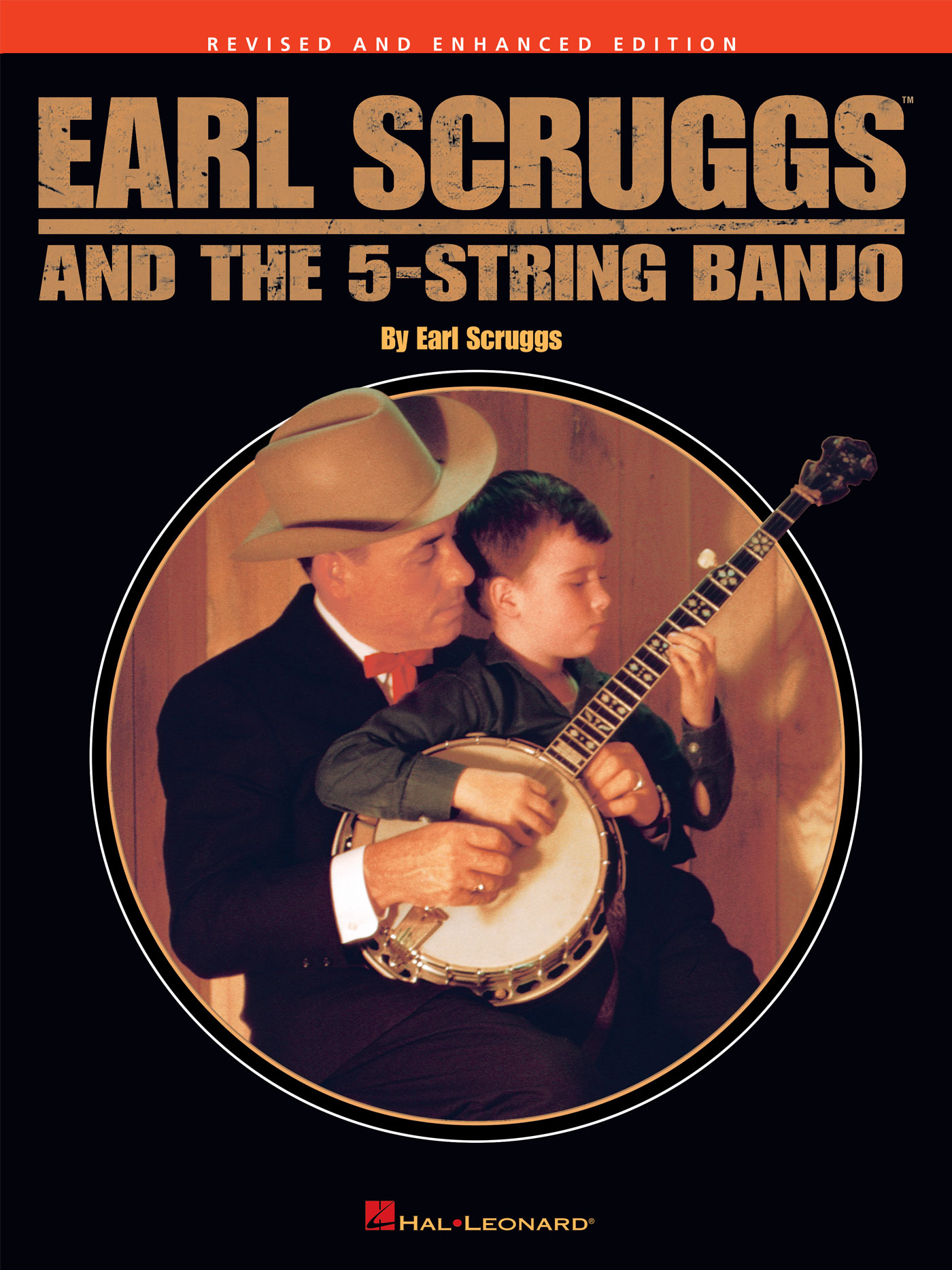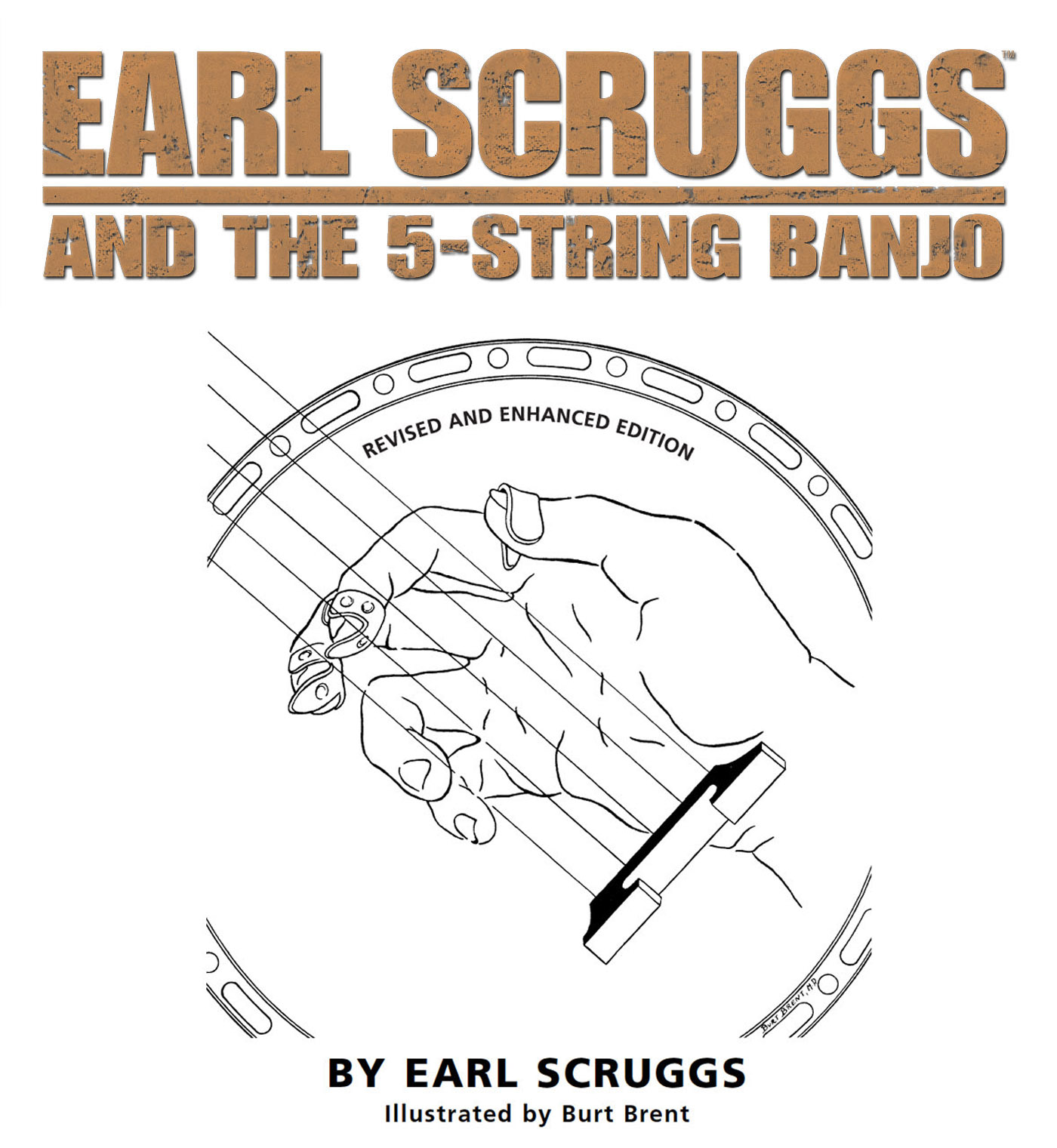
7777 W. Bluemound Rd. P.O. Box 13819 Milwaukee, WI 53213
In Australia Contact:
Hal Leonard Australia Pty. Ltd.
4 Lentara Court
Cheltenham, Victoria, 3192 Australia
For all works contained herein:
Unauthorized copying, arranging, adapting, recording, Internet posting,
public performance, or other distribution of the printed or recorded music
in this publication is an infringement of copyright.
Infringers are liable under the law.
Visit Hal Leonard Online at
www.halleonard.com
I dedicate this book to
my wife, Louise,
our sons, Gary and Randy,
our grandchildren and great-grandchildren,
and to the memory of Steven Earl Scruggs
Contents
ACKNOWLEDGMENTS
I n addition to Gary Scruggs, Burt Brent, and Warren Kennison, Jr., who are mentioned in the Preface, I would also like to thank the following for their efforts:
My wife, Louise, for her photographs and for writing the chapter A Brief History of the5-String Banjo.
Dr. Nat T. Winston for writing the Foreword.
Kathy Spanberger, President and Chief Operating Officer at Peer Music.
Jeff Schroedl, Vice President of Popular and Standard Publications at Hal Leonard Corporation.
Brad Davis for re-mastering the recorded instructional material for the audio that corresponds to the book. (Brads website is braddavismusic.com).
Carolintone Music Co., Inc.; Chappell & Co., Ltd.; J. Albert & Son Music Publishers and Paul Henning for permission to reprint Ballad of Jed Clampett.
Martha White Mills, Inc. for permission to reprint You Bake Right with Martha White.
Pamper Music, Inc. for permission to reprint Hot Corn, Cold Corn.
My brother Horace Scruggs and his wife, Maida, radio station WSM, the History Division of the Los Angeles County Museum, the Country Music Hall of Fame and Museum (Kyle Young, Director), David Schenk, Dan Loftin, Donn Jones, and the Gibson Musical Instruments Company (Henry Juszkiewicz, Chairman and CEO) for photographs. (Dobro guitars are mentioned in this book. Dobro is registered and owned by Gibson. Gibsons website is gibson.com).
There are several others who contributed to the original edition of this book that have since passed away.
They are:
Louis Grandpa Jones, David Stringbean Akeman, DeWitt Snuffy Jenkins, Dorris Macon, andThomas B. Allen, who provided photographs.
Harold Shot Jackson, who offered his insight concerning wood finishing for musical instruments.
Gene Autry, of Golden West Melodies, Inc., who granted permission to reprint Blue Ridge CabinHome and Shuckin the Corn.
And last but not least, I dedicate this Acknowledgment page to the memory of Roy Horton, a wonderfulsong man who worked at Peer Music in New York, NY for many years, pitching songs and making people smile. Roy played a major role in encouraging Peer to publish the original edition of the book.
PURCHASING A BANJO
I have met a lot of people over the years looking to purchase a new or used 5-string banjo or wanting to trade up to a better one. Ive been asked many times, What banjo should I buy? and What banjo would work best for me?
There are no quick and easy answers to those questions because personal preferences have so much to do with deciding on which instrument is right for any one individual.
If you are asking those questions, my advice is to do a little research. Learn as much as you can about a banjo and its parts. Shop around and compare different banjos within your price range. Go to music stores and spend some time trying out what they have in stock.
If you have friends who play banjos, ask them what they like about their instruments. Also ask them if there is anything they dont like about their instruments. Then ask yourself a couple of important questions: Which banjo sounds best to you? Which banjo feels best to you?
Once you have done all of that, it generally gets down to economics. Keep in mind that a cheaply built banjo will be harder to play than a good quality banjo. It can become very frustrating for someone attempting to learn to play an instrument if theyre learning on a clunker.
If youre not happy with your current banjo, then buy or trade up to what you consider to be the best banjo affordable to you.
There are several high quality brand names from which to choose. Gibson manufactures six Earl Scruggs Signature Models that I endorse. They are shown on certain pages in Chapter 10. You can also see them along with other Gibson banjos on Gibsons website (gibson.com).
YOUR BANJO AND ITS PARTS
Ive known of some players who constantly make adjustments on their banjos to the point of often taking them completely apart and then putting them back together. Id rather spend all that time watching a good baseball game or a good movie!
I like getting my banjo set up properly and then leaving it alone until something needs adjustment; and with most good quality banjos it really isnt all that often, except of course for changing strings.
Lets talk about the parts of your banjo and what to do and what not to do if certain things get a bit out of kilter.
Fingerboard and Neck
The fingerboard, which is also called the fretboard, is glued to the top of the neck.
A fine-grained hardwood is the best material for making a good, smooth-sliding fingerboard. Instrument builders often use ebony or rosewood.
The sliding action on a clean fingerboard is smoother than on a dirty one. Run a soft cloth over it frequently to keep it clean. A good finish on the neck will also give you smoother sliding action. The decorative designs seen on most fingerboards and pegheads are called inlay. Position markers are the small dots that are placed into the necks binding at certain fret positions.
The neck and fingerboard should not be badly bowed, or curved. (Bowed is pronounced with a long o, as in fiddle bow and Mr. Bojangles.) If the neck is bowed, the strings will not play in tune up and down the neck.
One simple test to determine if the neck is bowed is to sight down the length of the fingerboard as if you were aiming a rifle.
If the visual test still leaves you wondering whether the neck is significantly bowed, play the strings at each of the frets. If the other banjo parts are set up correctly and the strings play in tune up and down the neck, then dont worry about the neck possibly having a very slight bowas I said earlier, I leave things alone when theyre working properly.
If the neck is bowed to the extent that the strings play out of tune and there is a truss rod in the neck, the rod can straighten out the bow. The adjusting nut for the truss rod is beneath a removable plate mounted on the peghead.

